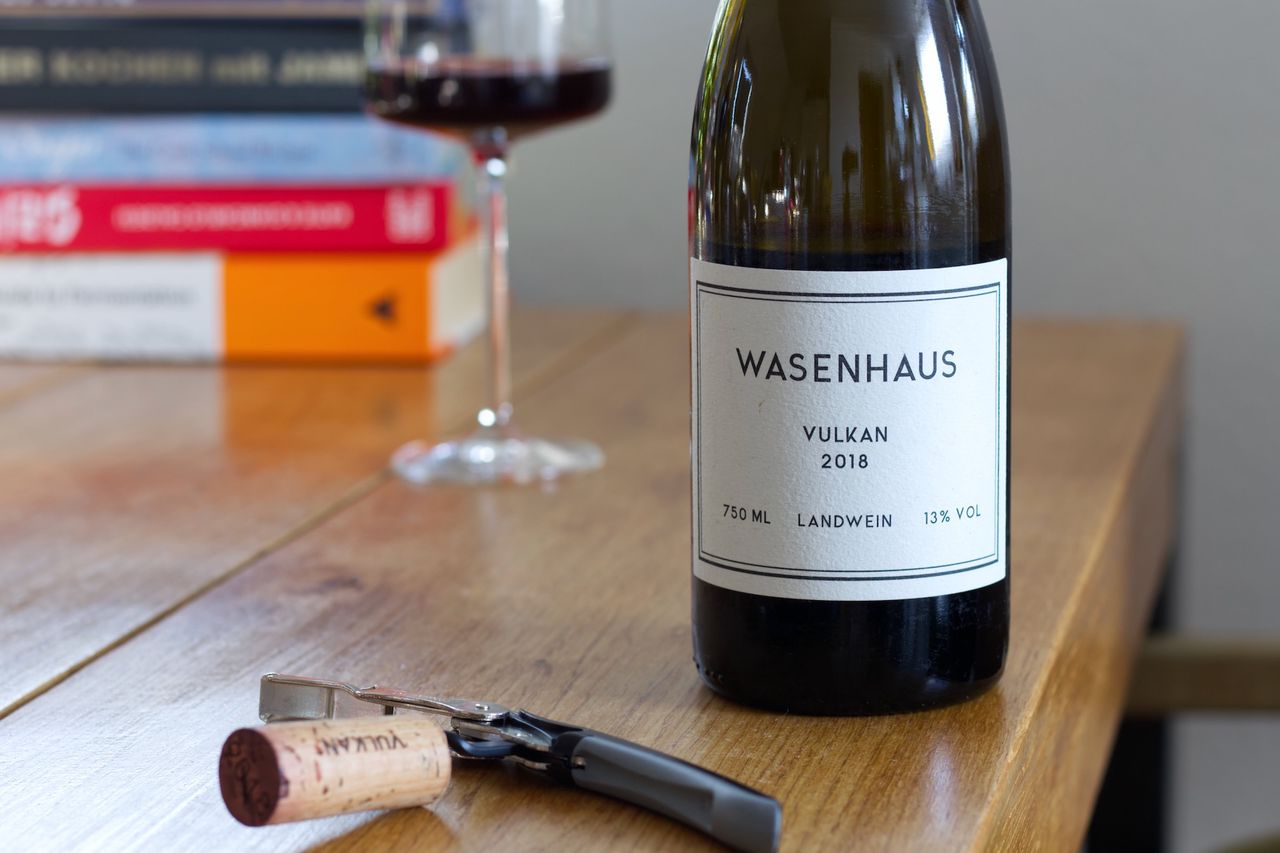Wasenhaus - Vulkan 2018
We continue to drink Burgundy from Baden: This time, a bottle of 2018 Spätburgunder Vulkan from Wasenhaus.

As announced last week, we’re staying in Baden and moving about thirty minutes north by car towards Freiburg. I don’t have statistics on which winery has appeared most frequently on this blog, but if such a statistic existed, Wasenhaus would likely be a top contender with now its fifth wine. The fact that I can’t verify this with hard numbers actually bothers me a bit. This will definitely be a project for the future, to get the tags in order and then see what we actually drink each week. To be honest, I didn’t expect to keep up with the weekly posts for this long at the beginning, which is why I kept the tags rather minimal. It’s biting me now, but it’s not an unsolvable problem. Surely, though, it’s a problem for winter evenings and not for 32 degrees in the attic. Quite the opposite of the wine today. Over the past few years, we’ve drunk our way through the entire Wasenhaus entry range and have already knocked on the door of the higher-tier wines with a bottle of Filzen Chardonnay. What’s still missing is a Pinot from this level, and that’s now on the table. Wasenhaus is still Christoph Wolber and Alexander Götze, who primarily grow Burgundy varieties around Staufen in Breisgau. The grapes for this wine come from a bit further north of Staufen, from the Kaiserstuhl, and are grown on volcanic soils there, as the name suggests. In the 2018 vintage, about one-fifth of the grapes were whole clusters during maceration. The wine is aged in small oak barrels for 1.5 years after fermentation. The fact that we have this particular wine now is somehow part of an internal coping strategy to stop thinking of 2018 as “that was just recently” and to actually start drinking it. This won’t be the only bottle from 2018 in this series.
The Vulkan smells of crushed red berries, herbs, undergrowth, and forest floor. The wine, that is, not the Kaiserstuhl. I don’t know what an inactive volcano like the Kaiserstuhl smells like, but I do know what active volcanoes smell like, and I’m glad this isn’t bubbling out of the glass. This is not a loud wine, but a very deep one. Not even when drinking. It’s more silk than sandpaper, with nothing disturbing or scratching. It spreads everywhere and stays there for a while. The next sip adds a creamy layer and finishes with lots of blueberry and minimal tannins. And so it continues. Each sip brings a bit more fruit, a bit more juiciness, and a bit more tannin to the tongue. It’s delicate, refined, and simply beautiful. The fruit that starts as blueberry gradually turns into cherry and gains an ethereal touch. It’s frustratingly beautiful. Frustrating because the wines are still not that easy to come by and because the general price increase hasn’t spared Wasenhaus either. Unfortunately, this has also been affected by the fact that some past vintages produced very small quantities. The winemakers deserve every euro, but in recent years, wine drinkers have certainly thought longer before hitting the buy button.
Contrary to my idea of establishing 2018 in my mind as a vintage that I should finally start drinking, the wine seems even fresher on the second evening. And it was super fresh already on the first evening. The berries and rough undergrowth are still there, but only in the nose. There’s clearly more acidity on the tongue now, it feels brighter, crisper, fresher in the fruit. There’s rosehip and the slight edge that had to build up sip by sip in the first glass now comes immediately. It has become more herbaceous, wilder, more unruly. As so often, the wine presents me with a puzzle. Usually, air and a night in the fridge do what a few years in the cellar would do, make it softer, with the juiciness and acidity stepping back rather than taking a big leap into the spotlight. Here, air acts more like anti-aging balsam, or at least how the commercials promise that balsam will work. Although that’s nonsense too, because the anti-aging is supposed to pull the wrinkles out of your face. Nothing has gotten smoother here. But it’s still good. Really, really good. And where I would have said yesterday that 2018 can now be approached calmly, today I’m not so sure anymore. In my case, it was the only bottle, so the question doesn’t arise. But I still feel like I’m not really getting any wiser about predicting wine development. As I said, and as I’ve often written here, this is not the first bottle that seems to travel back in time overnight. The opposite happens too, even more often. But how are you supposed to know what will happen? And how much does the wine, the bottle, or the storage conditions contribute to it? When does the actual instance of the bottle become more important than the entirety of all bottles? You often read about old wine that there are no good years anymore, only good bottles. But what we drink is far from old wine. A good indicator, if you have more than one bottle, is to observe the wine’s development over more than one evening. And if the first evening already becomes fresher, there’s a good chance it will hold up. But sometimes you’re wrong, and everything collapses overnight like a house of cards. The only thing that helps in such a case, if you want to make reasonable statements, is to increase the sample size. For science and all that.